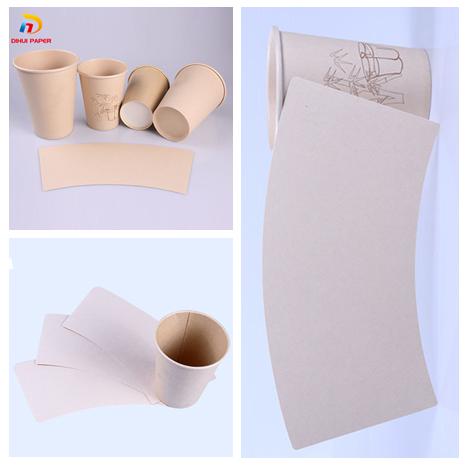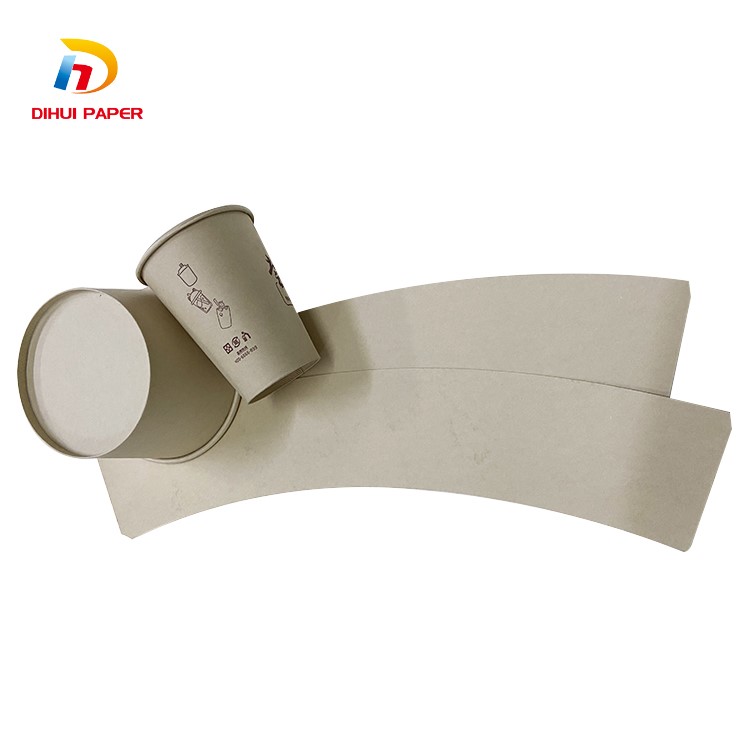Centuries-old practices could make all of us better stewards of Earth, even as we cling to modern habits like buying a to-go coffee in a disposable cup.
San Francisco- and Berlin-based 3D-printing startup GaeaStar and its founder and CEO, Sanjeev Mankotia, are attracting investment for at least one solution to single-use trash, like coffee cups, that we most often dump in garbage receptacles. Paper Cup Roll

Inspired by the 5,000-year-old handleless clay cups known by the Hindi word kulhar (or kulhad), which originated in the Indus Valley and remain in use in modern-day India, GaeaStar is printing its own vessels for hot liquids like coffee, tea or soup, and cold treats like ice cream. They can be tossed in trash bins — even smashed on the ground — without environmental harm, because they return to the natural components from which they were made.
Developed via high-speed additive manufacturing, or 3D printing, the cups and bowls are turned out as ultra-thin and durable versions of the Indian originals, yet still made of three simple ingredients: clay, water and salt. And clay, argues Mankotia, isn’t region-specific at all — it’s everywhere.
In India, the mostly cottage industry for throwing the clay cups especially popular for chai has gone through its own reexamination for the environmental benefits. Kulhars have returned to widespread use on the nation’s vast railroad network, for instance, after adoption of updated practices focused on the sustainability of the energy to power the wheels and the clay resources needed to turn out the earthenware.
GaeaStar, having sold more than a million units in Germany, made its U.S. debut Thursday through a pilot with California-based Verve Coffee Roasters.
“Our customers are mindful about how their choices impact the planet and we think they’ll be thrilled about this more eco-friendly swap to enjoy their daily cup,” said Colby Barr, co-founder of Verve Coffee Roasters.
GaeaStar, which has hopes for a wider U.S. push since it can calibrate the 3D printer it developed to the needs of a particular business and turn out branded containers, has raised $6.5 million in seed funding from Morningside Technology Ventures, at.inc/, Dart Labs Ventures, Sand Hill Angels, VSC Ventures and Climate Capital Ventures.
In fact, Mankotia told MarketWatch, “recycling” is a misnomer when it comes the company’s “drink-to-dust” technology.
“The cups and bowls are geoneutral, meaning they come from natural materials of the Earth and leave behind zero harmful waste,” he said. “Users can discard the containers in the normal trash or smash them on the ground, and they simply turn to dust. Recycling is no longer necessary or required.”
Americans generate some 40 million metric tons of plastic, yet only 9% of all plastic ever made has been recycled, by some measures. Even traditional paper coffee cups have a plastic coating to boost their integrity.
Read: Here’s the tiny percentage of plastic that’s recycled despite single-use bans, taxes and incentives
That trash ends up in landfills, only to slowly break down and emit greenhouse gases that warm the atmosphere, aggravating severe heat and storms that can be both deadly and costly. Or worse, our single-use, plastic-coated paper cups often don’t remain in their intended trash confinement, instead clogging up oceans.
Read: Fighting climate change will take ‘everything, everywhere, all at once,’ say U.N. scientists
“With the amount of single-use plastic piling up in our environment increasing, it’s obvious that recycling is not a functioning solution to plastic,” said Sophie Lamparter, managing partner of DART Labs Ventures, which invests in GaeaStar.
“Ending single-use plastic and replacing it with one of the oldest cup chemistries of all time, clay plus water plus salt, is the best example of the new old thing,” added Vijay Chattha, general partner of VSC Ventures, another investor.
“ ‘Users can discard the containers in the normal trash or smash them on the ground, and they simply turn to dust. Recycling is no longer necessary or required.’”
So how does it work, especially given that hot and cold foods require safe and durable transport? Unlike soggy paper straws or chemical-ridden plastic packaging, GaeaStar’s clay containers are ultra-thin yet 10 times stronger than paper cups, the company claims.
As for bowls, “people have used them for tapas, for hummus, olives, all kinds of little uses,” Mankotia said. “Originally, we made sure they worked for ice cream, but now that we have a larger version, they’re OK for salads, noodles and more.”
And if the idea of single use still makes some eco-conscious consumers uncomfortable, they can choose to reuse these cups and bowls a few more times. Landing somewhere between the most common single-use and reusable containers, these vessels can be taken home and safely used dozens of times with proper care while still having impact and guilt-free disposability, the company says.
Mankotia recognizes that using natural clay does mean the vessel is ultimately a porous container. Food may get embedded in those pores. A single use, therefore, is perhaps the best way to guarantee a germ-free experience, but because the vessel is made mechanically stable with a thin glaze, a user could re-sterilize the container with boiling water.
Mankotia admits that many sustainable food and beverage containers are already on the market, but he set out to create vessels that bring a high-end look and performance, can accommodate hot and cold drinks and food, and still meet a zero-waste target.
If customers buy printed containers from his startup, they can expect them to maintain integrity during shipping, and because of the basic ingredients, the containers wholesale for costs comparable to traditional paper and plastic.
Each container can be printed in an average of 30 seconds and, at scale, has a cost comparable to single-use cups and bowls currently on the market, the company tells its potential business customers. That means retail customers should not notice a cup-driven increase in what they pay.
The company is also thinking broader about sustainability. The sourcing of the raw materials and delivery of the product is all done locally via a “micro-factory model,” to limit the environmental footprint from start to finish.
And, ultimately, retailers can buy and customize the proprietary 3D printer for onsite vessel creation. That matters because, for instance, an amusement park or a seasonal restaurant could print the number of containers they need for the number of customers they anticipate — with no extra cost or environmental impact tied to shipping or storage.
“I didn’t start out as a container maker; we’re a tech company,” Mankotia said of his hope that the food industry thinks of new designs and uses for this clay-inspired solution. “But really I want to be in the business of eliminating plastic waste, and when I saw a child in India crush his chai cup, I knew I had it.”
The Berkshire Hathaway CEO has long favored stocks over bonds, a smart view given the historical outperformance of stocks.
Rachel Koning Beals is a MarketWatch news editor in Chicago.

Paper Ketchup Cup Visit a quote page and your recently viewed tickers will be displayed here.